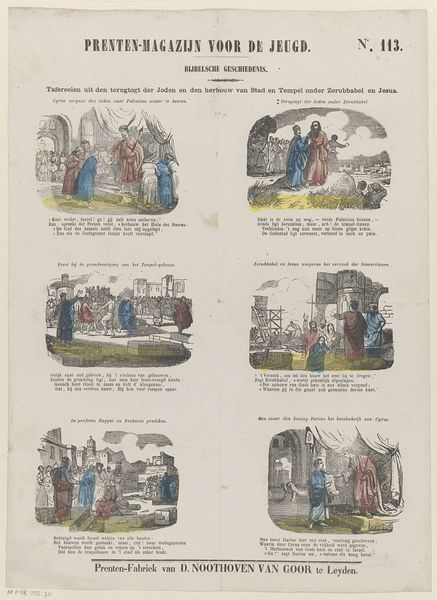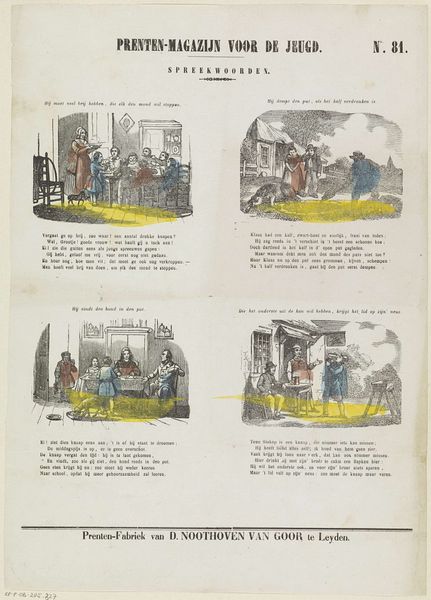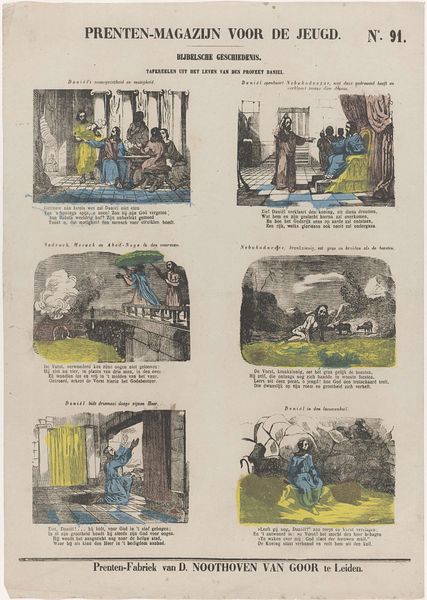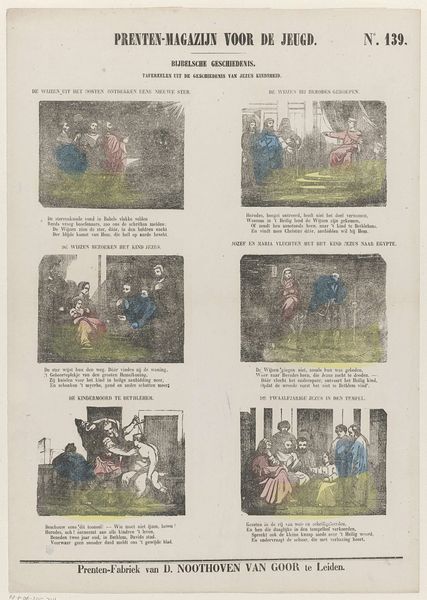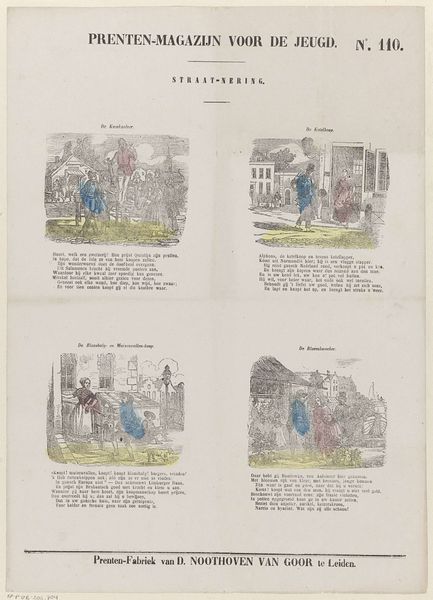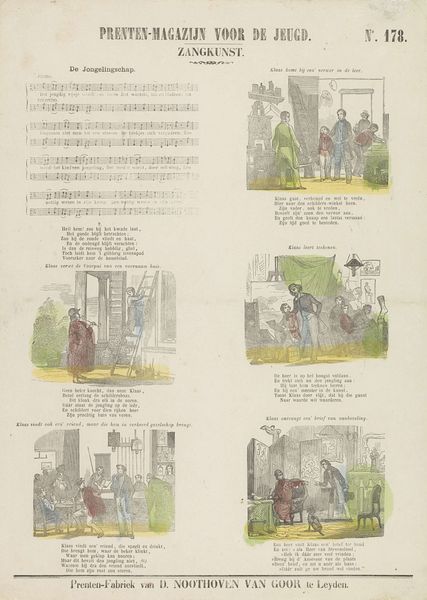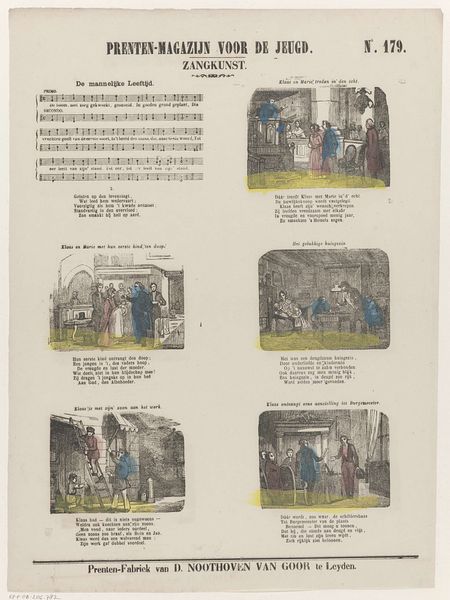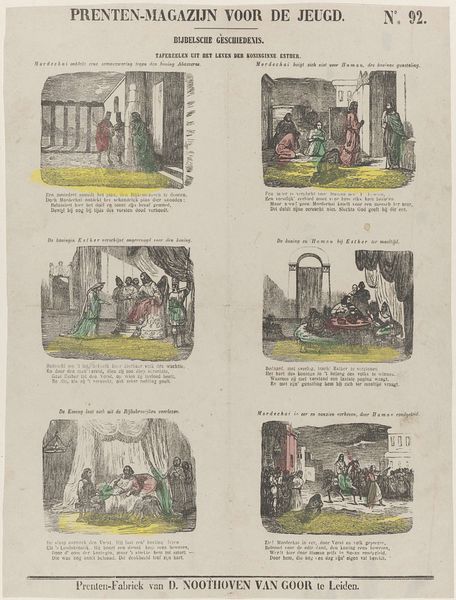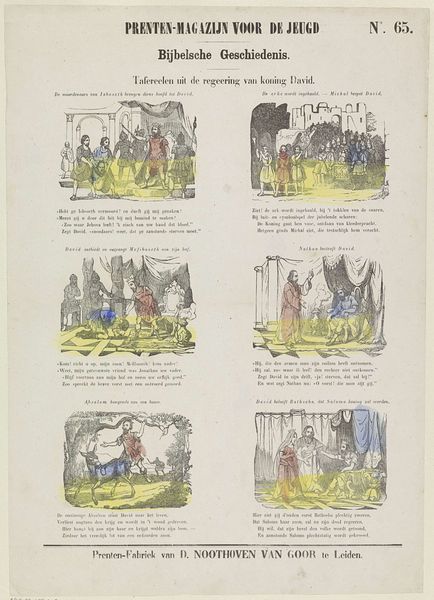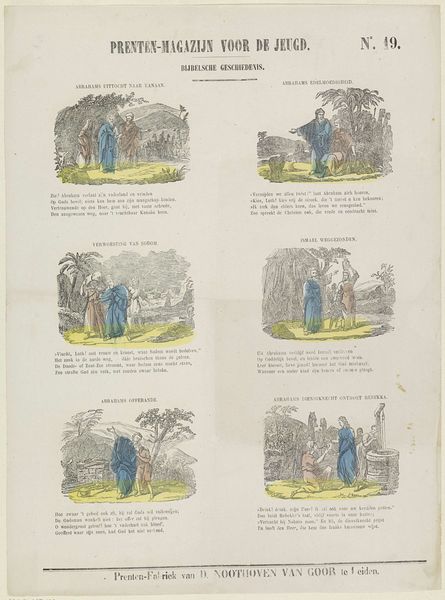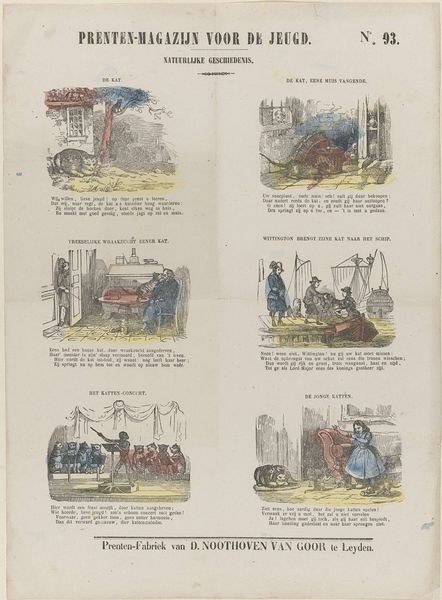
Tafreelen uit het leven der Apostelen. - Verdere uitbreiding van het Christendom 1850 - 1881
0:00
0:00
lithograph, print
#
narrative-art
#
lithograph
# print
#
history-painting
Dimensions: height 420 mm, width 294 mm
Copyright: Rijks Museum: Open Domain
Curator: Here we have "Tafreelen uit het leven der Apostelen. - Verdere uitbreiding van het Christendom," a lithograph from somewhere between 1850 and 1881, by Dirk Noothoven van Goor. Six small vignettes are arranged on the page, each depicting scenes from the Acts of the Apostles. What strikes you most about it? Editor: Its presentation reminds me of a sort of religious cartoon strip. The composition is very regimented and symmetrical. Given its didactic intentions, it's intriguing to imagine this being handled, traded, consumed—perhaps even repurposed or altered over time. Curator: Precisely. Its function as part of the Prenten-Magazijn voor de Jeugd—literally, the Print Magazine for Youth—is key. We have to consider how these images were disseminated, the materiality of print culture in the Netherlands, and the techniques used in their reproduction. The lithographic process allowed for relatively quick and inexpensive production of images aimed at a mass audience. Editor: Yes, and given the presumed young audience, the formal structure seems pertinent: the scenes are bordered, divided, sequential. There seems to be a rigid conceptual structure mimetic to the content matter it contains and attempts to transmit. I'm interested in how the artist uses line, here—primarily outlining forms rather than using shading to define them, creating a sense of flatness and perhaps making it easier to colour, though its subdued palette would require careful attention. Curator: That’s a strong point. The relatively muted colouration emphasizes the linearity, foregrounding the narrative function of each scene, the teachings and spreading of Christian beliefs. This is an instructional aid as much as it is art. Editor: True, I appreciate your perspective on this work: recognizing its cultural implications of production, as well as the structural form. It makes the historical context tangible.
Comments
No comments
Be the first to comment and join the conversation on the ultimate creative platform.
